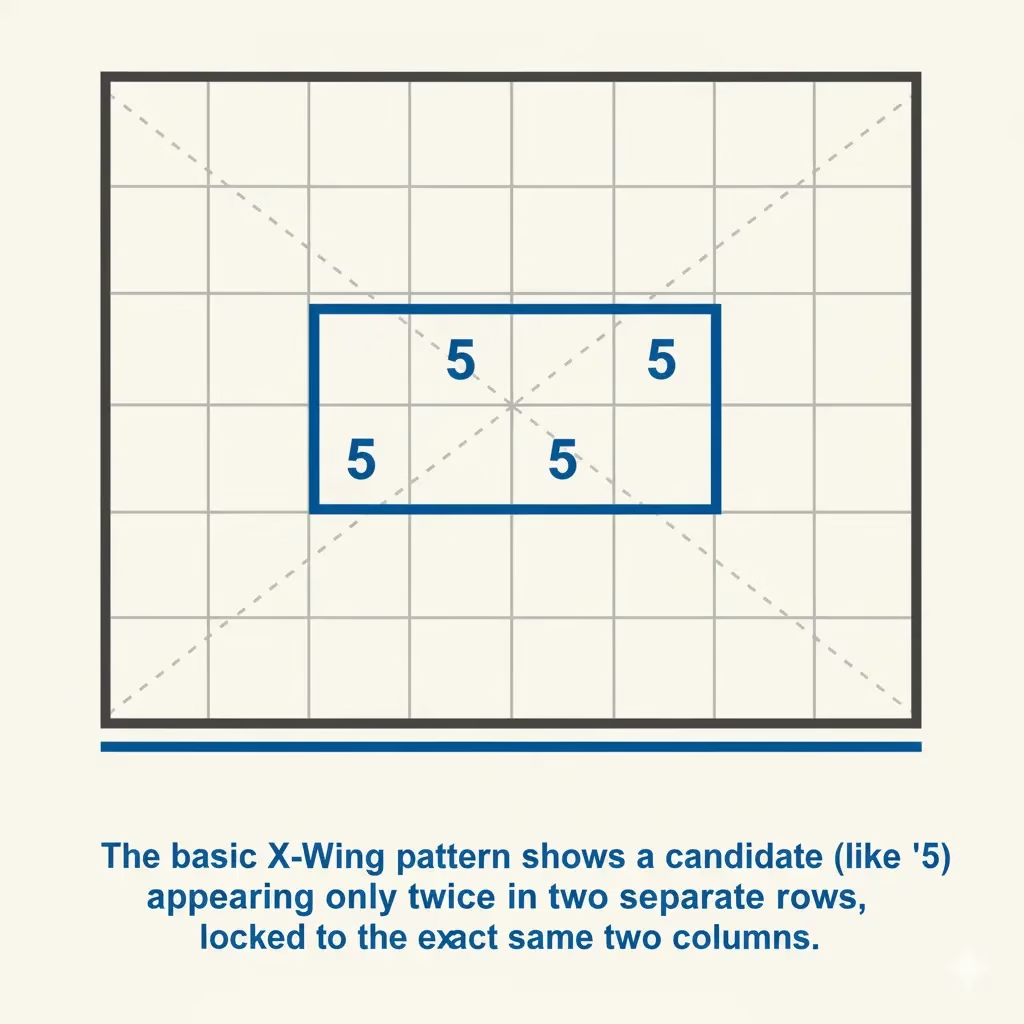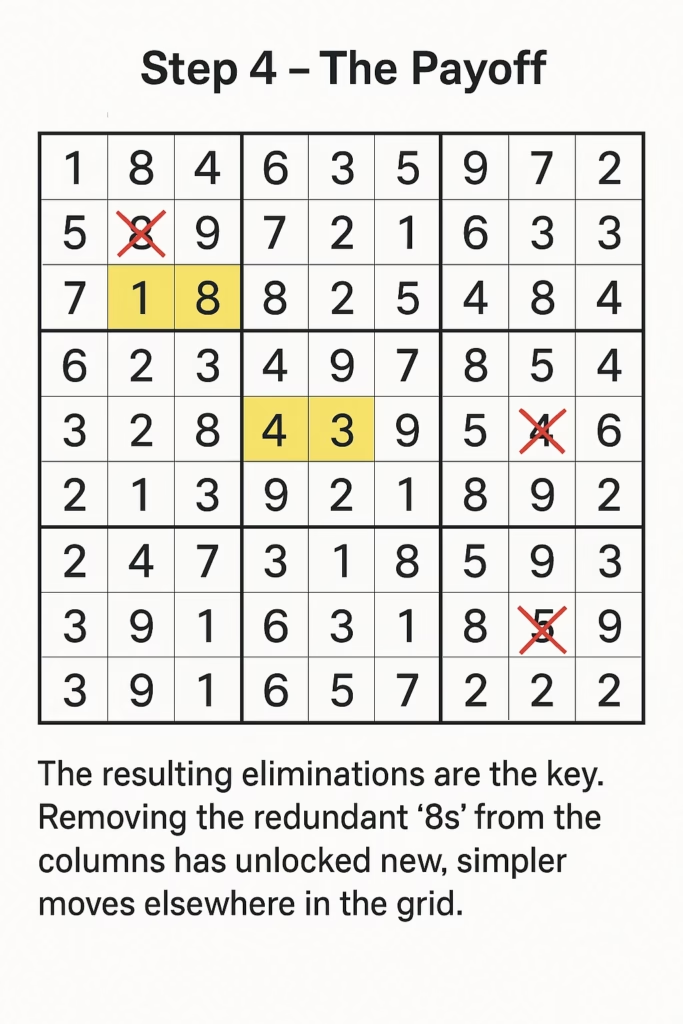Have you ever hit “the wall” in a difficult Sudoku puzzle?
You’ve filled in all the “Naked Singles.” You’ve scanned for “Hidden Pairs.” But you’re still stuck. The grid is a sea of “pencil marks” (candidates), and no obvious moves are left.
This is the exact moment where you transition from a beginner to an advanced solver. And the key that unlocks that next level is a technique called the X-Wing.
It might sound complex, but the logic is surprisingly simple. This 5-minute guide, complete with clear diagrams, will show you exactly what the X-Wing is, how to spot it, and how to use it to break open those “impossible” puzzles.
What is the Sudoku X-Wing?
In short, the X-Wing is a pattern of four numbers.
It gets its name because when you draw lines to connect the four cells, it often looks like the letter ‘X’.
The X-Wing pattern occurs when a specific candidate (let’s say, the number ‘5’) appears in:
- Only two cells in a particular row.
- And in a second row, that same candidate appears in only two cells.
- Critically, these two pairs of cells are in the exact same columns, forming a perfect square or rectangle.

The “Aha!” Moment: Why the X-Wing Works
Here’s the logic. Look at our diagram above.
In Row 2, the ‘5’ must go in either C3 or C7. There are no other options in that row.
In Row 6, the ‘5’ must go in either C3 or C7.
Now, think about the columns.
- Case 1: If the ‘5’ for Row 2 goes in C3, then the ‘5’ for Row 6 must go in C7.
- Case 2: If the ‘5’ for Row 2 goes in C7, then the ‘5’ for Row 6 must go in C3.
Do you see the pattern? No matter what, one of those ‘5s’ will be in Column 3, and the other will be in Column 7.
This means we have locked the ‘5’ to those two rows (R2 and R6) for those two columns (C3 and C7).
Because we know the ‘5s’ for Column 3 and Column 7 are guaranteed to be in those four boxes, we can make a powerful move:
We can confidently eliminate ‘5’ as a candidate from every other cell in Column 3 and Column 7.
How to Use the X-Wing: A Step-by-Step Example
Let’s walk through it on a real puzzle.
Step 1: Scan for “Paired Candidates”
Look at your grid, with all candidates (pencil marks) filled in. Scan one row at a time. Are there any rows where a number appears only twice?
In our example, we scan Row 3 and find that the number ‘8’ appears only two times: in C2 and C8.

Step 2: Find the “Partner” Row
Now, keep scanning. Do you see another row where the ‘8’ also appears only twice?
Yes! In Row 7, the ‘8’ appears only in C2 and C8.
Step 3: Check for Alignment
This is the magic.
- Row 3’s ‘8s’ are in Column 2 and Column 8.
- Row 7’s ‘8s’ are also in Column 2 and Column 8.
They are aligned perfectly. We have an X-Wing.

Step 4: The Elimination (The Payoff!)
We now know that for Column 2 and Column 8, the ‘8’ must live in Row 3 or Row 7.
This allows us to look at Column 2 and Column 8 and eliminate ‘8’ from every other cell in those columns.
What Happens Next?
Look at Diagram 4 again. By eliminating the ‘8’ from R5C2, we might have left only one candidate in that cell (a “Naked Single”). By eliminating the ‘8’ from R1C8, we may have unlocked another move.
This is the power of the X-Wing. It doesn’t solve the puzzle outright, but it “breaks the dam” and triggers a cascade of simpler moves that were impossible just a minute ago.
A Quick Note: Column X-Wings
This exact same logic works for columns, too! If you find a candidate that appears only twice in Column A, and twice in Column B, and they are aligned in the same two rows, you can eliminate that candidate from the rest of those two rows.
You’ve Mastered the X-Wing
Congratulations! You’ve just learned one of the most powerful and satisfying techniques in Sudoku. It may seem tricky at first, but after you find your first one, you’ll start seeing them everywhere.
The X-Wing is just the beginning. It’s part of a family of “fish” patterns (like the Swordfish and Jellyfish) that advanced solvers use.
Your Next Step:
- Practice: The best way to learn is by doing. Fire up one of our Daily Difficult Puzzles and try to find one.
- Learn More: Ready for the next level? Read our Top 10 Solving Techniques Every Hard Sudoku Player Must Know
- Share: Did this guide help you? Share it with a friend or in your favorite puzzle community!
